#Online shopping online trading online Amazon
Explore tagged Tumblr posts
Text
ONLINE MARKETING CONSULTANT 💰💰💰 FOR AMAZON IN INDIA💵💵💵
1इंडिया में आपको अपनी कमाई को शुरू करने के लिए एक अकाउंट बनाना चाहिए जो कि यह एक एफिलिएट मार्केट से जुड़े हुए होते हैं💰💰💰💰💰जो आपको ऑनलाइन मार्केटिंग करने में मदद करता है और आपको ऑनलाइन पैसे कमाने में मदद करता है अमेजन ऑनलाइन प्लेटफार्म पर पैसा लगा कर आप अच्छी अर्न कर सकते हैं 💵💵💵💵ऑनलाइन प्लेटफार्म से जुड़ी जानकारीइस ब्लॉग पर आपको मिलती रहेगी और आप अपने वेबसाइट बनाकर आप अच्छी अर्न कर सकते हैं Read more
#Online marketing#Online shopping#online shopping app#online shopping online trading online amazon#online business directory#onlineshopping#online marketing companies in bangalore
0 notes
Text
Amazon Prime Day occasion begins, gross sales up 12% in first 7 hours: Report | Firm Information
Prime Day can function a bellwether for the vacation procuring season. 3 min learn Final Up to date : Jul 17 2024 | 12:10 AM IST Amazon.com Inc.’s Prime Day gross sales rose virtually 12 per cent within the first seven hours of the occasion in contrast with the identical interval final 12 months, based on Momentum Commerce, which manages 50 manufacturers in a wide range of product…
#amazon#Amazon Prime#artificial intelligence#bank account#Check Point Software Technologies#counterfeit products#director of worldwide buyer risk prevention#E-commerce & Auction Services#e-commerce shoppers#eBay#Federal Trade Commission#Food Retail & Distribution (NEC)#HTTP#Internet & Mail Order Department Stores#Josh Planos#online hoaxes#online retailer#online shopping giant#Online shopping scams#phony products#public relations#retail calendar#Scott Knapp#Security Software#social media ads#vice president of communications and public relations#Walmart
0 notes
Text
Magical Powder Recipes

A collection of some of my original magical powder recipes.
All-Purpose Cursing Powder
Bree's Banishing Powder
Clean House Powder
Come Hither Powder
Dead Man's Dust
Dream Dust
“Eye of Sauron” Revelation Powder
Get Thee Hence Powder
Ghost-Be-Gone Powder
Heal Thy Heart Powder
Hexbreaker Powder
Inspiration Salt
Lucky Day Powder
“Outta My Way” Powder
Peacekeeper Powder
Persuasion Powder
STFU Powder
Traveler’s Luck Powder
Truthfinder Powder
For those of you who may not be able to find herbs locally, here are some online suppliers who consistently have affordable and high-quality products.
Penn Herb Co. - Bulk herbs, spices, and botanicals - including over 400 wildcrafted herbs, gathered from the United States and worldwide. Single ounce packages are available. Excellent source for powders.
Starwest Botanicals - Bulk herbs, spices, oils, and teas. Good amount of organic and Fair Trade products, as well as supplies for holistic medicine and tea-making.
Mountain Rose Herbs - Bulk herbs, spices, and sundries. Also carries organic products and essential oils, and has link to schools that offer courses in herbalism and herbology.
Bulk Apothecary - Bulk herbs, spices, and oils, in addition to materials for the home production of soap, candles, wine, and beer.
For more recipes to fill out your potion kit, you can check out Pestlework: A Book of Magical Powders & Oils. (Available on Amazon and in my shop!)
If you're enjoying my content, please feel free to drop a little something in the tip jar or check out my published works on Amazon or in the Willow Wings Witch Shop. 😊
#witch community#witchcraft#witchblr#baby witch#spells#potions and powders#witchy things#kitchen witch#green witchcraft
4K notes
·
View notes
Text
Excerpt from this story from The Revelator:
In recent decades the Inland Empire — comprised of San Bernardino and Riverside counties — has been the primary victim of America’s warehouse boom. As demand for online shopping has surged — e-commerce sales grew 50% to $870 billion during the pandemic alone — this region has served as a billionaire’s dumping ground. Those are the words of Tom Dolan, executive director of Inland Congregations United for Change. “Now it’s no longer just Warren Buffet, it’s Jeff Bezos and Amazon,” Dolan told The Guardian in 2021. “And we’re paying the cost of doing their business.”
That business is only made possible by taking out a nonconsensual loan from the residents of surrounding communities. It’s a coercive trade: the health and safety of citizens for the profits they’ll never share. And no worthwhile efforts have been made to pay off that debt.
In order to fulfill the glamorous promises of expedited, overnight and same-day deliveries, diesel trucks conduct over 600,000 daily trips through the Inland Empire alone, carrying roughly 40% of the nation’s goods. These vehicles emit 1,000 pounds of diesel particulate matter every day (alongside 100,000 pounds of nitric oxide and 50,000,000 pounds of carbon dioxide).
The International Agency for Research on Cancer has classified diesel particulate matter as a Group 1 carcinogen — the most severe category — due to sufficient evidence linking diesel exposure to lung cancer. (Other studies have suggested a relationship to cancers of the bladder, larynx, esophagus, stomach, pancreas and blood, alongside asthma, other respiratory disease, heart attacks and premature mortality.) The region bordering the warehouse hub in one Inland Empire city, Ontario, ranks in the 95th percentile of cancer. A 2015 study estimated that 70% of the total cancer risk from air pollution in California is caused by diesel exhaust alone.
The people who suffer the consequences of our online shopping are not typically over-consumers themselves. The South Coast Air Quality Management District found that the 2.4 million people living within half a mile of a warehouse are also disproportionately Black and Latino communities below the poverty line. In 2012 San Bernardino ranked as the second poorest city in America with over 34.6% of people living in poverty. And of all the residents living within a mile of the average Amazon warehouse, 80% are people of color.
20 notes
·
View notes
Note
How does Barnes & Noble allocate shelf space and choose books to put on display? Do publishers pay to have their books in Barnes & Noble stores? Do they pay to have their books displayed in prominent spots? What about independent bookstores? How do bookstores and libraries find out about upcoming books to order? Thanks!
Oy. This could be the topic of like, a nonfiction book (for a very niche audience), or a college seminar, rather than a TUMBLR POST, but hey.
First, a caveat: Please do bear in mind that, while I have 35 years of bookstore experience, I don't work for B&N or have any insider access to B&N; all my knowledge about B&N comes from easily available, non-paywalled reportage that can be found by anyone online. I have never worked for a library except as a board member, so I have zero insider library collections knowledge. I also was a bookstore buyer a decade ago at this point, so some things might have changed -- and I worked for an independent bookstore (key word is INDEPENDENT -- ie, different indies may have totally different ways of doing things!) -- So this is quite broad strokes info.
I'm going to take your questions out of order because it will make more sense.
How do bookstores and libraries find out about upcoming books to order?
The first and most obvious way bookstores and libraries find out about upcoming books to order is via the Publisher's Frontlist Catalogue. "Frontlist" is the term for BRAND NEW / FORTHCOMING BOOKS. Catalogue is exactly what it sounds like -- literally a big ol' catalogue that describes the books, has early reviews and blurbs and whatnot, is full of praise for the books, yadda yadda. Catalogues are divided into multiple "seasons" throughout the year. (Nowadays, catalogues are mostly digital via Edelweiss -- but the same concept applies!)
Generally speaking, publishers have Regional Sales Reps across the country. Those reps physically go to the bookstores in their region every season and present the future season's frontlist offerings (ie, the stuff in the catalogue!) to the buyer. (Very small or far-away stores might have a phone rep -- and nowadays some rep meetings are done via Zoom -- but you get the idea!) The reps have marketing material like ARCs or samples of the books to share, and be able to give more intel than the catalogue alone can do.
It's the sales rep's job to know the bookstore buyer well, know the audience who shops there, and make great recommendations to the buyer. The buyer makes decisions about what to stock based in part on the sales rep's recommendation, but also on whether or not they liked the book or think that their patrons will like it, and based on historical data, like how that author or genre usually does in their store, etc etc.
Sales reps visit about 6 months prior to the season being discussed -- so the Fall 2024 books that are in stock at stores now and in time for Christmas were certainly already ordered before Easter.
Independent Bookstores have their own sales reps; B&N and Target and Amazon and places like that have their own sales reps just for them. (I don't really know how it works for libraries -- very big library systems might also have their own sales reps, but I don't think very small systems would, but idk!)
Other ways they find out about books to order: Booksellers and librarians (and publishers) attend library conferences and trade shows every year, sometimes multiple per year both regional and national; the publisher's sales and marketing teams do presentations about books, have booths with all their upcoming books on display, etc etc.
Booksellers and librarians also are regular people in society, so sometimes they find out about new books sometimes the same way anyone does - through the media and social media! They read reviews, listen to the radio, watch Colbert, go on Instagram, or whatever -- so if they skipped it or only bought two copies when they saw it in the catalogue months and months ago, but then there's a huge media blitz about it, or some amazing reviews come through, the publisher will probably send them a note like "heyyyy just so you know, this is getting HUGE BUZZ, you should probably order extra!"
Basically: Publishers Sales, Marketing and Publicity departments are all doing things behind the scenes for months before a book ever hits a bookstore shelf. That's how books get on the shelf.
How does Barnes & Noble allocate shelf space and choose books to put on display? (What about indie bookstores?)
B&N now chooses books to be on display at the store level. (More on that in the next question). So I'll answer the Indie Bookstore part, and we can assume that a very similar calculus is going on at individual B&N locations!
As explained above, buyers order most of the frontlist books for any bookstore from their sales rep many months before they come out. For a chain bookstore like B&N or a very large independent with multiple locations, that frontlist buyer may be located in some central location -- for smaller stores, buyers are on-site at the bookstore. (A store might also have a "backlist" or "restock" buyer, either the same person or, for a bigger store, a totally different person, who places smaller orders from wholesalers during the week to fill special orders for books customers request and to replenish stock of books they are selling well).
On the backend, bookstores use "turn" to allocate how much shelf space a given section will have -- but that's a much more technical / granular answer that you can read more about here. But as for what comes in and what gets displayed, the new books get into the store in the first place because the buyers have ordered them months in advance, usually via the sales rep (as described above), and when they come in, booksellers use their brains and taste to display them.
Most bookstores have several tables or displays that are always the same (with rotating stock) -- something like New and Noteworthy in every section. So New Hardcover Fiction, New Paperback Fiction, New SF/F, New Nonfiction, etc. When large piles of new books come in every tuesday, the booksellers on the floor will put the piles of books on the New table appropriate for that book. If a pile is getting low, they will swap those ones out so that they table looks full. You get the picture!
Most bookstores also have temporary displays -- seasonal, for a holiday, or themed in some way. For example, it's late October as I type this, and my local bookstore currently has a Kids Halloween display, an adult "Spooky Season" display, a display about democracy/voting (because election day is around the corner), a display about autumn/cozy vibes, a display about fiber arts (because the town hosts a massive craft show), etc. The manager or the owner or one of the booksellers might decide "oh, isn't it funny that all these books have OWLS on them this season, let's make an OWL display" -- and they put whatever they want on it.
(Again, for B&N, many decisions probably also are made at Headquarters -- BUT, individual stores have leeway about how they display their books based on their location, etc etc.)
Do publishers pay to have their books in Barnes & Noble stores? Do they pay to have their books displayed in prominent spots? What about independent bookstores?
Yes and no? Kindaaa, but not really in the way you are thinking?
ETA: THIS IS INSANELY COMPLICATED AND THE EXPLAINER BELOW IS JUST BARELY SCRATCHING THE SURFACE. It's just the best I can do, in this forum, right now.
OK. There's something called "Co-Op" -- that stands for like, "co-operative marketing" or something like that. There's a world in which you could consider Co-Op "publishers paying to have books in stores" -- that's how it kind of was historically, anyway.
Basically, IN THE PAST (I really can't stress that enough), publishers and major bookstores like B&N would come to some sort of agreement about certain titles that would "get co-op" -- like, OK, we have a Spooky Season table in the front of the store, it will cost you X-hundreds/thousands (??) of dollars to have a pile of your new upcoming book SPOOKY GHOST STORY on the front table of every B&N store. Publishers paid it, the bookstore ordered all those books and put them on display. Here's an article about that from 2010 that gives the basics and some links.
This straight-up "paying for a display slot" MIGHT still be the case at stores like Target, I have no idea. But for B&N, it's not the case anymore. This article from 2022 explains how the revamp of B&N includes getting rid of "pay to play" displays:
"Although the chain’s stores carry similar titles, in a shift away from centralized buying, individual managers determine where the books are placed and order quantities. The focus better aligns assortments with local tastes. Mr. Daunt told Publishers Weekly last year his goal is to provide managers with tools and then “get out of the way.”
Co-op title placement practices have also been ended because unpopular titles were receiving prominent placement and driving excessive return rates."
FWIW, Indie bookstores didn't / don't usually do "co-op" in quite the same way -- a single independent bookstore simply doesn't have the money or clout for it to be worth it for a publisher to pay them for title placement. Like, if Grandma Sassy's Olde Bookery orders five copies of a new book, that's huge for them, the publisher doesn't care what Grandma does with her displays, it's not making a dent for Penguin Random House, you know? Much different deal than a chain.
HOWEVER, co-op isn't ONLY about "pay to play" title placement. For example, let's say the publisher has a huge new book they want to promote because it is hotly anticipated and they have nine bajillion copies. They might create a special display out of cardboard (called a "dump") that fits 15 copies of the book -- any bookstore who orders 15+ copies of the book gets this special cool display, and a special discount.
OR, maybe the publisher decides to do a "Summer Reading Special" where they create special paperbacks of 20 different titles that have "buy two get one free" stickers on them -- if a bookstore wants to participate, they will order however-many copies of those books, but they will get a much better discount, both as an incentive to participate and put these titles on display and push them, and to make up for the money they would be losing by giving some of them away.
OR, a bookstore is doing a special event for an author, and they pay for a bunch of special posters to be made -- they might be able to get reimbursed from the publisher for some or all of the money they spent.
Those things are (kinda) the publisher "paying" the bookstore, so they are also technically co-op marketing! But as you can see, it's not quite the same as publishers directly paying a bookstore for a certain title's placement.
Sorry for the length, but hey -- that was a lot of questions!
8 notes
·
View notes
Text
Vivi Armacost loves Temu. She uses the Chinese online marketplace to buy crafting supplies for her purse-making hobby. “You can get purse detailing and hardware for cents and pennies,” said Armacost, who is 24 and lives in New York. She says it seems like “basically everything” in her apartment comes from Temu
Donald Trump’s 10% tariff on China-made goods sold to the US, which went into effect early on Tuesday morning, might change her shopping habits. On top of this, the US Postal Service briefly suspended deliveries of incoming parcels from China and Hong Kong before they were later resumed.
The tariff closes off a trade loophole that allowed fast-fashion companies such as Temu and Shein to ship packages under $800 into the US duty-free; this loophole, called “de minimis” has been criticized by both political parties in recent years. On Tuesday, Reuters reported that Shein and Temu are now likely to raise prices, as is Amazon’s Haul, a new e-commerce app that imports products from China-based sellers.
Shoppers are concerned the tariff will get in the way of their retail therapy.
“Trying to get that last Temu order in before Trump puts another tariff on China,” Armacost, who works in consulting and also makes comedy videos on TikTok, captioned a post on Monday that shows her frantically typing on a computer, hacker movie-style. It was mostly a joke, but she has friends who made one final Temu run. “My friend Piper got a ton of apartment stuff during a last-minute tariff haul,” she said.
Temu – which surpassed Amazon as the most-downloaded shopping app in 2023 – and Shein are beloved by the overly trendy and the obsessively thrifty. While Shein is known primarily for clothing, Temu also sells makeup, home goods and decor. These products are cheap – just over $4 for a pair of women’s sneakers on Temu, or $1.45 for bracelet on Temu – but of dubious quality. Inevitably, many end up in landfills.
“A lot of the stuff comes actually way smaller than you expect,” Armacost said. “I bought a desk lamp, except it can fit in my hands.”
In the months before Trump took office, shoppers urged each other to stock up on Temu and Shein, in case the new administration followed through on its promise to tax US trade partners. “Kinda feeling emo bc this may be the last good Black Friday for a while because of the tariffs,” one TikTok user wrote in a clip. “Better collect your ‘vintage Shein’ because they will probably go for $100 next year.’”
Two days after the election, the fashion writer Amy Odell warned readers of price hikes in a post to her BackRow Substack titled: “Trump Won. So Shop Now.” Susan Scafidi, a lawyer and founder of Fordham’s Fashion Law Institute, told Odell: “Everything’s going to be more expensive, which is a little crazy when you realize that a lot of the Trump appeal was with regard to the economy.”
Could the tariff kill fast fashion, an industry defined by wasteful over-consumption, as we know it? No, says Margaret Bishop, a textile and apparel specialist and professor at New York’s Parsons School of Design and the Fashion Institute of Technology. “If anything, I think these tariffs will strengthen fast fashion’s hold on customers,” she said. “If everything costs more, particularly food, transportation and housing, they’re going to have to cut back somewhere.
“Americans have a real hunger for new fashion, so they will trade down to be able to continue to buy things. If a $1 pack of T-shirts at Temu becomes $2 a pack, that’s still cheaper than spending $20 for a couple of T-shirts that are better made,” she continued.
Sheng Lu, a professor of fashion and apparel studies at the University of Delaware, agreed that tariffs would not “fundamentally shift” Americans’ love of a good, if sketchy, deal. While small businesses will bear most of the pain from tariffs – due to supply chain snarls or the fact that Americans won’t be able to spend as much – larger corporations such as Shein and Temu tend to absorb costs.
“These companies are resourceful,” Lu said. “My more immediate concern is that small and medium-sized enterprises won’t survive, or will face significant challenges.”
In 2023, a US congressional report alleged that there was an “extremely high risk” that Temu used forced labor in its supply chain, and that both Shein and Temu evaded US human rights reviews. (Shein denied these claims at the time, while Temu did not comment on the report.) A recent report from the Swiss advocacy group Public Eye found that some Shein workers endure 75-hour work weeks. (Shein told the BBC it was “working hard” to address the issues raised in the report.)
The fast-fashion industry is also synonymous with high carbon emissions and pollution.
Lu fears that tariffs will exacerbate these issues. “If they have to pay more on tariff duties but at the same time make their prices competitive, that’s not good news for workers or the environmental impact, because companies will have more incentive to cut corners,” he said.
In the EU, the European Commission moved on Wednesday to tighten checks on goods sold by online retailers such as Shein and Temu, amid fears that “dangerous products” were flooding the market and that local competitors were losing out to competitors selling unsafe or counterfeit products.
Armacost knows that these e-commerce giants represent the worst of Americans�� desire for excess. “But also, at the same time, spending does stimulate the economy,” she said. “In response to the idea that it’s a good thing if people stop ordering so much random stuff, I say: ‘What’s the point of living in a country if I can’t order 100 pieces of junk for $15?’”
#posted in full because wow#anyway#trade wars#overconsumption#tarrifs#fast fashion#temu#shein#waste#pollution#labor rights
6 notes
·
View notes
Text
Forbes article: "How Struggling College Bookstores Found A Way To Beat Amazon"
Oct 20, 2023,06:30am EDT
A new sales model adopted by hundreds of universities limits students’ ability to shop around for textbooks.
By Lauren Debter, Forbes Staff
As fall semester dawned at Texas Christian University in Fort Worth, senior Olivia McFall turned to Amazon to shop for books — not only because its prices were better for certain titles, but so she could get her course materials quickly. The campus bookstore could sometimes take a week or two. Unacceptable.
“Teachers will start assigning reading on the first day,” McFall, a 22-year-old fashion-merchandising major, told Forbes. “You get behind if you don’t have that textbook. If I buy it on [Amazon], it’s usually because I can get it faster than the bookstore.”
For decades, Amazon’s lower prices and speedier delivery have blown a crater in the college bookstore business. Given the option to shop around, students only buy about one-third of their course materials at the campus store.
Now the bookstores are fighting back. They say they’ve hit on a plan that would, almost magically, quash competition from online rivals like Amazon. T.C.U. is among the colleges considering a model that would automatically charge students for textbooks on their tuition bills, which can be covered by financial aid, and get them to students by the time classes begin. Books are typically discounted 30% or more, said the bookstores, who negotiate volume discounts. Students must return materials at the end of the semester.
Despite reservations from education advocates who worry it limits purchasing options for students, the plan, dubbed Inclusive Access, is spreading like kudzu. It rose out of a 2015 rule from the U.S. Department of Education that permitted universities to include the cost of textbooks with tuition, as long as prices were under competitive market rates and students could opt out.
Bookstores latched onto the idea during the pandemic. They were looking to boost sales at a time when they were hamstrung by closures, declining enrollment numbers and the seismic shift to digital textbooks — and still are.
In the 2022-23 academic year, Inclusive Access already captured the business of 44% of students, worth an estimated $1.4 billion annually, according to the National Association of College Stores.
Illinois-based Follett Corp., a privately held company (annual sales: $1.6 billion) that operates roughly one-third of college bookstores, said the number of its campuses that have adopted the Inclusive Access model has tripled to 450 since 2019. New Jersey-based Barnes & Noble Education (annual sales: $1.5 billion), which spun out of the bookseller chain in 2015 and also runs a third of campus bookstores, said it has over 150 schools signed up for Inclusive Access, up from just four in 2019. (The colleges themselves operate the other one-third of campus bookstores.)
Overnight, schools that switched to Inclusive Access brought guaranteed revenue to booksellers. Sell-through rates, which measure the percentage of course materials students purchase at the campus bookstore, skyrocketed from about 30% before Inclusive Access to north of 80 or 90%, according to Follett and Barnes & Noble Education. Few students opt out, the companies said, because they like the prices and convenience.
It’s a clever way to beat Amazon. Unable to compete, Follett and Barnes & Noble Education separated their customers from the open marketplace and bundled their products with something Amazon couldn’t sell — college tuition. The bookstore gets the customer without ever having to go up against the online behemoth, which is currently being sued by the Federal Trade Commission for its own alleged anti-competitive practices. (Amazon has said it disagrees with the allegations, and will contest the lawsuit.)
“It’s a significant volume increase because you’re capturing all of the course material market share in an institution,” Jonathan Shar, who oversees campus stores operated by Barnes & Noble Education, told Forbes. “Plus, it’s much more predictable.”
Amazon Prices
An Amazon spokesperson declined to comment on the impact Inclusive Access is having on its textbook sales. Amazon said it may offer discounts to schools that buy books in bulk, but it’s been winding down certain aspects of its textbook business. In April, it stopped renting physical textbooks to students and in 2020 it stopped buying textbooks back from students.
Last year, 37% of students purchased books from Amazon. That’s down from 46% in 2019, according to the National Association of College Stores.
Selling textbooks isn’t the business it used to be. A decade ago, students spent $4.8 billion a year on textbooks, according to research firm Words Rated. Today, it’s about $3.2 billion. During the 2022-23 school year, students spent an average of $285 on course materials, the lowest figure since the National Association of College Stores began tracking spending 16 years ago.
That’s partly the result of a rapid shift to lower-cost digital textbooks, with 55% of course materials now digital, up sharply from 15% prior to the pandemic, according to Emmanuel Kolady, Follett’s CEO. More textbooks are being made available online for free from sites like OpenStax, too. Nearly three-quarters of students say they were assigned at least one free course material in the latest academic year, according to the National Association of College Stores.
Company’s ‘Cornerstone’
Barnes & Noble Education, a publicly traded company that runs 800 campus bookstores, has described Inclusive Access to investors as a “cornerstone” of its plan to return to profitable growth, noting that course-material revenue rises more than 80% and gross profit nearly doubles after schools switch to the new model.
The company has lost a cumulative $600 million since 2018. Last year’s sales were 23% below pre-pandemic levels. This summer, it had to negotiate an extension on its loan payments because it couldn’t come up with enough cash. As part of the deal, it gave up two board seats and said it would explore selling the company. Its stock price has lost 90% of its value in the last two years, tumbling to less than $1 a share.
“It feels like this is their first, second and third priority,” said Ryan MacDonald, an analyst at Needham who covers Barnes & Noble Education, referring to Inclusive Access, which the company calls “First Day Complete.”
Benefits For Students
The booksellers claim the program saves students money. Follett said that students spend an average of 30% less than if they were to buy new books and are better equipped for classes as Inclusive Access gets them their materials before the semester begins.
At New York University, for instance, where Follett runs bookselling, students are automatically billed for books unless they opt out. Most are digital rentals. A textbook for an introductory biology class is priced at $36.75, which gives students access to a digital copy for the semester. That’s 20% less than if they went directly to the publisher’s website and rented it for the term. It’s 40% less than on Amazon, which only offers the option to buy the digital version, not rent it.
The math, however, is not always transparent. According to a report from the U.S. PIRG Education Fund, which analyzed 52 book-buying contracts, it’s “hard, if not impossible” to figure out how deep the discounts are because schools don’t make it clear what the discount is based on.
Savings can be less meaningful for students who would have otherwise bought used books or borrowed books, said Nicole Allen, director of open education at SPARC, a nonprofit that advocates for more course materials to be free. The one-quarter of students who intentionally skip buying certain books each semester, usually because they don’t think they need it, are also charged, she said. As more schools migrate to Inclusive Access, Allen questions whether discounts will disappear since publishers have a long history of raising prices.
“This is already a captive market because students are told what to buy,” Allen told Forbes. “Inclusive Access makes it an even more captive market by telling students how they’re going to buy it.”
Even without Inclusive Access, students can be limited in their comparison shopping. More and more professors are assigning books with single-use access codes, available for an additional fee, which students use to access quizzes, homework and other materials online. Promoted by publishers who benefit from the new revenue stream, they’re often sold exclusively by the campus bookstore and cannot be resold.
Follett’s president Ryan Petersen predicts that a newer variant of the model called Equitable Access, where students pay a flat fee for their materials regardless of the courses they’re taking, will be adopted by most schools in the next five years.
“We’re having this conversation with every campus we can,” Petersen told Forbes, “potentially even to campuses who are sick of hearing about it.”
43 notes
·
View notes
Text
The Race for the Everything App in the West: Unraveling the Quest for Digital Domination
In the neon-drenched, cyberpunk reality of the 21st century, the digital realm is witnessing a colossal battle, reminiscent of Neal Stephenson's speculative universes. Tech corporations, with their sights set on the horizon, are not just competing but are on an ambitious quest to forge the "Everything App"—a digital El Dorado that promises to centralize our online lives. This pursuit, led vigorously by X (formerly known as Twitter) and echoed by a symphony of other platforms, is transforming the way we interact with digital services.
At the heart of this evolution lies a simple, yet profound strategy: expansion beyond core functionalities. Apps that once specialized in specific domains are now crossing into territories uncharted, offering a suite of services that range from messaging and social networking to financial transactions and beyond. This trend is not a mere coincidence but a calculated move towards creating a digital ecosystem where users can perform every conceivable online activity within a single app.
The Vanguard of the Everything App
X, under the stewardship of Elon Musk, is potentially the most audacious contender in the race. Initially a platform for microblogging, X is now venturing into areas like payment processing and content creation, aiming to transform itself into an indispensable tool for its users. However, X is not alone in this pursuit. Apps like WeChat in China have already demonstrated the viability of the "everything app," serving as a model for Western counterparts.
Facebook (now Meta), with its vast suite of services including Instagram, WhatsApp, and Oculus, is another titan striving to stitch together a comprehensive digital tapestry. Google, through its ecosystem encompassing Gmail, Google Pay, and YouTube, is also inching towards creating a unified experience. Meanwhile, Amazon's expansion into cloud services, media streaming, and even groceries underscores the same ambition: to be the one-stop digital shop for its users.
The Siren Song of Convenience
The allure of an everything app lies in its promise of unparalleled convenience. Imagine a digital Swiss Army knife that not only connects you with friends and family but also handles your finances, entertains, educates, and even shops for you. The potential benefits are immense, offering a seamless integration of digital services that could simplify user experience, enhance efficiency, and possibly even reduce the digital clutter of having multiple apps for different needs.
A Dystopian Shadow
However, beneath the glossy surface of convenience, there lurks a more sinister possibility. The consolidation of services into a single platform raises alarming concerns about privacy, data security, and monopolistic control over the digital lives of billions. The more we rely on a single app for our daily needs, the more we risk creating a digital monoculture vulnerable to surveillance, censorship, and exploitation. In a dystopian twist, the everything app could become the ultimate tool for digital hegemony, where choice is an illusion, and autonomy is traded for convenience.
The Unstoppable Momentum
Despite the dichotomy of potential outcomes, the race towards the everything app is unlikely to slow down. The convergence of services into unified platforms reflects a broader trend in digital evolution, driven by user demand for efficiency and the corporate quest for dominance. As this race accelerates, we find ourselves at a crossroads, navigating between the utopian dream of digital convenience and the dystopian nightmare of centralized control.
The everything app is both a looming threat and a beacon of progress in our communications landscape. Its emergence is a testament to our insatiable appetite for innovation and our willingness to explore the unknown. As we venture further into this digital frontier, the decisions we make today will shape the cybernetic world of tomorrow. The everything app is not just a possibility; it is an inevitability. Time will tell whether it becomes a tool for liberation or an instrument of control.
In the words of Neal Stephenson, we are coding our own new world, and in this world, the everything app stands as both the zenith of our aspirations and the nadir of our fears. As we hurtle towards this uncertain future, one thing is clear: the digital landscape will never be the same again. - REV1
#everythingapp#x#elon musk#elon#cyberpunk#neal stephenson#tumblr#technology#tech#communications#comms#digital
18 notes
·
View notes
Text
How Web3 and STON.fi Are Changing the Way We Experience the Internet

The internet has come a long way. From basic web pages and emails to social media and streaming, it’s hard to imagine life without it. But here’s a question: Do you feel like you really own your online experience? Probably not.
Most of what we do online is controlled by a handful of companies. They store your data, determine what you see, and take their share of your money in fees. Web3 is here to change all that, and platforms like STON.fi are leading the way. Let me explain how this works in a way that’s clear, simple, and relevant to your daily life.
What Is Web3, and Why Should You Care
Think of Web3 as the next version of the internet. Right now, we live in a Web2 world, where platforms like Facebook, Instagram, and banks act as middlemen. They connect us, but they also take control—of our data, our privacy, and even our money.
Web3 is about giving that control back to you. It’s a decentralized internet where you own your information, make direct transactions, and interact without needing a central authority to mediate. Imagine it like owning your house outright instead of renting it from a landlord who can raise the rent or evict you at any time.
Blockchain: The Foundation of Web3
Here’s where things get interesting: Web3 runs on blockchain technology. If that sounds intimidating, let me simplify it.
Think of blockchain as a giant spreadsheet that everyone can see but no one can tamper with. Every time a transaction happens, it’s written down and locked in forever. This removes the need to trust a single institution, like a bank, because everyone can verify the records.
For example, when you send money to a friend through a traditional bank, the bank handles the transaction. With blockchain, it’s like handing your friend cash directly—but digitally. No delays, no hidden fees, no need for “approval.”
What Makes TON Blockchain Special
Now let’s talk about The Open Network (TON). Think of blockchains like highways. Some are slow and congested, others are faster and more efficient. TON is like a six-lane expressway—designed for speed, scalability, and ease of use.
This means transactions on TON are quick and cheap, making it perfect for platforms like STON.fi, which rely on fast, secure exchanges.
STON.fi: A Better Way to Trade and Earn
So, where does STON.fi fit into all this? If you’ve ever traded cryptocurrency, you know how centralized exchanges work. They’re like traditional banks—they hold your assets and charge you for using their services.
STON.fi does things differently. It’s a decentralized exchange (DEX), which means you’re always in control of your funds. Trading on STON.fi is like buying goods directly from a farmer instead of going through a supermarket. There’s no middleman, so it’s more transparent, often cheaper, and gives you full ownership.
Even if you’re new to crypto, STON.fi is built to be user-friendly. It’s not about overwhelming you with technical details; it’s about making decentralized finance accessible to everyone.
Why This Matters to You
Let’s make this personal. Think about your money. Right now, it’s stored in banks, managed by financial institutions, and subject to their terms. What if you could take control of your finances without relying on anyone else?
Web3 and platforms like STON.fi offer that possibility. It’s not just about trading crypto—it’s about financial independence. Whether you’re sending money, investing, or exploring new ways to earn, these tools empower you to be your own bank.
For instance, STON.fi allows you to participate in liquidity pools, where you can earn rewards by providing funds for trades. It’s like renting out a spare room in your house—you earn income from something you already own.
Getting Started Without the Jargon
You don’t need to be a tech wizard to explore Web3 or STON.fi. If you’ve ever used online banking or shopped on Amazon, you already have the skills to get started.
The first step is simply learning. Visit STON.fi, experiment with small trades, or read more about how decentralized exchanges work. The goal isn’t to become an expert overnight—it’s to take one small step toward understanding this new world.
The Bigger Picture
Web3 isn’t just a tech trend; it’s a movement. It’s about creating a fairer, more transparent internet where individuals—not corporations—are in control. Platforms like STON.fi are making this vision a reality, one transaction at a time.
Think about the shift from cash to credit cards. At first, it felt unfamiliar and risky, but now it’s the norm. Web3 is following a similar path, and those who adapt early stand to benefit the most.
Final Thoughts
Change can feel daunting, but it’s also an opportunity. Web3 and STON.fi aren’t just technologies—they’re tools to help you take control of your digital life and finances.
You don’t have to jump in all at once. Start small, stay curious, and explore how these innovations can fit into your life. Because at the end of the day, the future of the internet isn’t about technology—it’s about you.
3 notes
·
View notes
Text
Amazon Japan has said it will collaborate with Japan Fair Trade Commission (JFTC) after the watchdog conducted an on-site inspection related to suspected violations of anti-monopoly laws.
The e-commerce giant is under suspicion of inappropriately urging vendors to lower their prices on its online shopping platform in return for better product placement, as first reported by Reuters, citing a source.
“We are cooperating fully with the [Japanese] authorities,” Amazon Japan spokesperson, Tomoko Inoue, told TechCrunch in an email statement.
The action concerns Amazon’s Buy Box system, which highlights one seller’s products as the preferred choice on a product page. Shoppers need to go to different pages to see products from different vendors so the Buy Box funnels shoppers’ attention to whichever products have been selected to be featured.
The tech giant has been accused of requesting “competitive pricing” (i.e., lower prices) versus competing e-commerce platforms in order for products to be featured in the Buy Box system, according to reporting by the Japan Times.
Moreover, sellers were allegedly asked to use Amazon’s internal logistics and payment services to be eligible for the Buy Box promotion.
3 notes
·
View notes
Text
ONLINE MARKETING CONSULTANT 💰💰💰 FOR AMAZON IN INDIA💵💵💵
1इंडिया में आपको अपनी कमाई को शुरू करने के लिए एक अकाउंट बनाना चाहिए जो कि यह एक एफिलिएट मार्केट से जुड़े हुए होते हैं💰💰💰💰💰जो आपको ऑनलाइन मार्केटिंग करने में मदद करता है और आपको ऑनलाइन पैसे कमाने में मदद करता है अमेजन ऑनलाइन प्लेटफार्म पर पैसा लगा कर आप अच्छी अर्न कर सकते हैं 💵💵💵💵ऑनलाइन प्लेटफार्म से जुड़ी जानकारीइस ब्लॉग पर आपको मिलती रहेगी और आप अपने वेबसाइट बनाकर आप अच्छी अर्न कर सकते हैं Readmore
0 notes
Note
hi mycopal :) I'm enjoying your blog and admiring your set up, seems very hightech. I'm also reading about cultivating a local (Australian) psilocybin variety we often find in pine forests. Could you point me in the right direction for more info to get started with a simple at home set up for beginners? thanks again for your good work :)
Hello there mycopal! Thanks for reaching out! I appreciate your kind words :) I’m super proud of my lab area! It has taken two years to put together by saving 25-50 a paycheck lol!! Humorously my roommate doesn’t like that i commandeered a whole room … haha, but here we are ;) What mushy are you looking to cultivate? Pscilocybe Tampensis or P. subtropicalis maybe? :)
note: my opinions and advice are based on my own experience and studious research :) there are MANY ways to skin things with… skin… lol; as such, my way should work for most but may not and there are many other mycoeducators with varied approaches that offer great insight in their own right :) I have a few vids on youtube (still new to content creating there and working on adding more) if you wanna see more of what I do as I outline it below! At the end of this long winded MCX response I will provide supportive resources for your consideration in order they are addressed in this response.
🍄Tip: get some nasalpharyngeal swabs so you can actively swab and store mushroom genetics you find in the wild for later reararch ;)
Pretext: I live in a (technically) tropical area so what i do with my research areas may be different than you! I am not sure how much of what im about to detail has been considered by you… but if youve considered it then disregard :) i like to break things down like you’re new new new incase theres any detail to miss.
Introductory Answering your Q: Basically you have to consider a handful of generalized steps for cultivating any fungus; and find TEKs (ie: guides by other mycopal’s that have yielded them success) and make your own tek— I always say that the mycojourney is coming up with your own tek, cobbled together from current teks that speak to you and also are appropriate for your resource availability :) after you get through my response you’ll have homework of studying resources but also: finding TEKs for your specific strain you want to work with :)
My preferred supplies-
Genetics: Dont know about the laws and availability where you live, but formal vendors (like innoculatetheworld ; sporeworks) and informal mycoeducators (who sometimes vendor spores) like PGT and Boomershroomer; are the only spore sources I trust (outside of my own stock;).
Boomershroomer makes quality inflatable monotubs and if you order one of her tubs she sends genetics with it! A little ‘secret’ ;) to be aware of!
PGT has a shop online thats only open sometimes but has a cool collectible trading card system for his genetics (buy the card get the microscopy supply with the card).
ITW and SW are generally up 24/7 and are more formal vendors that also sell microscopy stuff.
I currently use and recommend using 6qt shoebox totes for grow container (the kind that you buy in 5-10 packs from Walmart that have gusseted lids that allow some air flow for ‘sneakers’ to be stored hehe). Note that you can use 12/24/48/72qt etc, but I have no experience with those and they require larger set ups with fans, humidifiers, etc. i prefer less is more :)
I always promote a company called Microppose :) they do amazing filters and just started their own monotub production I think :) my fave substrate is CocoBliss coconut coir pith, and I use lab grade nutritional additives like: gypsum, lime, malt extract, and yeast off amazon in various stages of my process. For grain bags, before I made my own, I only trust: spawnmagic.com ; for my grains I use Producers Pride: Whole Oats (like what is given to horses) from the feedstore :) a 50lb bag has lasted me two years, no lie. I dont use bags, but jars for grain: i use brand: Ball, glass mason jars for spawn containers prior to moving spawn into a tub with substrate. I use Aozita wide mouth masonjar plastic lids (off Amazon) for my jars as they can be modified with filters and then pressure cooked safely and come with rubber seals :)
Now to go into detail to answer your question:
Here we go-deep breath-: lets talk cultivation and research starting:
1. Genetics: (a) multi spore syringe (mss) (can be injected into a grow bag but isnt ideal and may not produce viable strains) (recomended to use mss on agar to isolate your own colonies), (b) spore print/swab (requires agar) or (c) liquid culture (LC) isolate syringe (best option for immediate injection-inoculation of grain containers/bags with best chance for healthy growth and fruiting without time and hassle of the steps I outline further :)
1a. If you are able to work with agar (either make your own or buy premade sterilized, one time use agar plates): then you will start your journey by MSS->Agar->Isolate separate germinating colonies off mss agar plate to new plates (those become your mother isolate plates for each specific strain isolate for whatever strain youre working with). The mother plate should become your cold storage, reference plate as you study growth and fruiting characteristics of the colonies you isolate :) at that pont: You can then use some excised pieces of the mother plate (if in a rush, or if able to wait, till gen1 plates (transfers from mother plate to new plates that become duplicate isolates of the mother plate)) to inoculate a jar or two and also inoculate other plates to continue to ‘run the mycelium out’ / ‘chase the mycelium’.
1b. If you are not able to do agar work then I strongly suggest you seek genetics that are LC syringe. Basically, LC syringes are when mycopal takes a 2nd gen+ plate and moves some of that mycelium to sterile sugar water and lets the mycelium grow out in that water till its all filled with reproduced mycelium and can be sucked up into syringes for better more assured propagation of genetics ;)
Side thought: Spore swabs and spore syringed are dice rolls :) [Spore germination discussion incl quote from TMC- https://at.tumblr.com/mycochaos/uscrybal-commented-on-a-comment-i-made-quoting/pjzr0c86nlyt]
2. Grain spawn: once you have genetics hammered out, next is grain spawn. Grain spawn can be … well, any grain. Really. Mushrooms can colonize and fruit off of wet cardbord… 💯🍄😂, so what “type” of spawn is more about whats available in your area imo. Youll need to sterilize any grain spawn, unless using a premade bag thats already sterilized or taking chances with uncle bens (or similar) rice baggies that arent sterilized but are arguably cleaner than grains scooped out of a bags of grains from a mill or feedstore.
2a. Grain bags: milo, millet, rye berries, corn kernals, rice, whole oats, really any grain or berry that has a husk can be used :) some species prefer specific grains most work on all kinds of grains with varying levels of efficiency. Some grains are more or less robust and some do better when moistened and or pressure cooked than others :) i make my own grain but exclusively use glass mason quart jars :)
2b. Grain jars: my preference. I have recent grai. Jar prep and creation reels/shorts on my instagram and some on this tumblr if you wanna see specifics :) generally I do 15psi, 10 minute venting, for 1.5 hours for my grain and I do not soak grains, only low boil them for 30 min to soften husks and extract some grain nutrients to then use that liquid ‘grain soak’ run off for agar nutrients :)
2c. Uncle Bens rice bags: i dont do this and dont have any good advice on it. I have a UB tek link or two at end for consideration and there is a whole reddit mushroom sub i think r/unclebens (?) for this
2d. All in one bags: i also do not use these and do not recommend them generally. If you have never had a flush and are literally first timing it, then all in one may work fine :) but as much of the process you can source or create yourself the cheaper and often better, imo!
3. Substrate & Spawn-to-bulk (S2B): many mycopals have their own substrate preferences, but for me I prefer shaved coconut coir pith. I generally do a coir block 650g, 500g vermiculite (from garden store), and 50g gypsum + 50g lime for my substrate. I do not sterilize it, but I do heat pasteurize my substrate for at least 12 hours. In an air tight, insulated cooler (like for sodas at a party). You can also cold pasteurize. I like how Boomershroomer and PGT do their sub and learned from them then tweaked it for my own preferences :)
When my jars are fully colonized and observably free from contam, I will S2B using a clean butter knife :) I kinda cut down into the grain in pizza slices then swirl the knife around as I let grains that spill out mix with my substrate and basically do 1qt spawn to 2qt of substrate, saving maybe 10-15% of the spawn and substrate till end to make a special psuedo casing layer once bulk of spawn and substrate are mixed and compacted. Then I do a last sprinkling of the remaining grain like a baby lasgana and cover that with substrate.
Casing layer explainer: A casing layer is a layer of material applied on top of the colonized substrate in mushroom cultivation. It can help improve yield, reduce certain types of surface contaminants, and maintain humidity around the fruiting bodies. In my experience, using an organic sphagnum peat moss mixed with lime powder and filtered water has produced successful tubs without the need for pasteurization or sterilization. Before I used that i just used left over substrate as a casing layer :) — While some species require a specific type of casing layer after substrate colonization, most do not require one. However, adding a casing layer can be beneficial for improving yield and humidity control.
There are different ways to apply a casing layer. Some people apply it as part of the spawn to bulk (S2B) process, while others apply it only after the substrate surface is fully colonized or slightly before pinning. Personally, I have used a casing layer when colonizing pasteurized wheat/rye straw to provide an even fruiting surface for mycelium. I have also experimented with an organic peat and lime dust casing layer (no pasteurization or sterilization), which has helped retain humidity and has not resulted in any contamination. Personally, I've worked some APEs in that past that had a casing layer applied in the same instance as the S2B occuring, essentially the compacted bits colonized faster than the looser casing layer. Where I always use casing layer, is if I use spawn to colonize pasteurized wheat/rye straw, if only to provide an even fruiting surface for the mycelium! But, even then... most cubensis can fruit solely on pasteurized straw, with no casing layer!
4. Colonization and Fruiting:
4a. Youll need to find a TEK based on whatever substrate container you settle on using :) what ive outlined so far is my own tek, using 6qt shoe boxes and the materials ive outlined above. The substrate chamber/container can be a flat container/tote or could be fruited out the top of a grain bag/all-in-one bag OR could fruit off the side of a bag (if its a species like Oyster mushies that prefer side fruiting). I personally use unmodified tubs and will leave lid on my tubs while colonizing and then take lid off and replace with cleaned, upside down, misted 6qt tub that rests on the edges of the right-side-up tub to create a mini climate that allows more passive air flow, allows light to filter in from high angles promoting fruits growing upwards towards the light. Light isnt needed until pinning, and is a secondary trigger to pinning but a primary factor in pigmentation of fruits and growth direction of fruits.
Colonization of most mushroom fruiting fungi is generally between 68-80F, every species and even some varieties within those species, may have specific temp needs. The way mycopals control for this is many things that I dont have to use fortunately :) ‘Martha Tents’ are something to consider. Some use heating pads and humidifiers depending on where they live and where they are compared to the sea💯. I dont have any experience with martha tents or doing more than using my home A/C, a closet, and a heppa room filter to control my temps in the closet and with lots of trial and error…. I now leave my home at 72F, my closet warms to about 74 with the door shut and a/c at that temp, so i let plates, jars and tubs colonize at 74F and then I will move the tubs to open closet with more air flow and is closer to 72F when I am moving to fruiting :) Ive tried to be clever in how I use my space… so i use wire racks and know higher up on the rack is hotter and less air flow whereas lower is cooler and often more air flow.
Something I havent really gone into yet in this response is about sterility, aseptic environments, personal and environmental hygiene. All important to condsider…
4a. Heres my explainer on that:
Strict aespetic and hygiene techniques are not 100% and even using fancy laminar flow is not 100% contamination free potentials! Common contaminant sources include airborne spores, dust, and environmental factors. Pets that roam around your cultivation area could carry spores on their fur or paws, which may be released when they move through your space. Additionally, some fungal contaminants, like Kahms yeast, can present in distinctive ways and there are dimorphic fungal molds that have one or more alternate morphologies, main dimorphism being mold with a secondary yeast form (whence the mold spores get into human lungs, for example with blastomycosis perhaps) as an alternative reproductive presentation within its life cycle (based on temperature and environmental variables). It's essential to understand that spores and other contaminant-genetic cells are incredibly tiny and (in the case of most spores) can suspend in the air, waiting for air currents, light, or vibrations to move them around. Wet spores and bacterial cells oftentimes require animal assistance or liquid splashing/spritzing/spraying to move around, but can often hitch rides of natural environmental variabes (currents of wind, water, dirt, etc). Humans also carry a range of bacteria and fungal organisms on their skin, which can contribute to localized environmental dust and potential contamination when working in hyper sterile or attempted hygienic environments while researching fungi :)
4b: Primordia, Pins and Fruiting: Pinning is a colony activity (that impacts all sides of your cake once colonized) that shifts metabolic processes of the mycelia to pinning and fruiting, this is why when you start getting heavy side pins you rarely get any flat-surface pins and fruits (all the energy goes into what pins form and fruit, first). Additionally, I believe my suggestions will be effective in controlling for environmental triggers to pinning, it is important to note that side pinning can also occur due to other factors such as genetics or substrate composition.

You can reduce the microclimate from being created that promotes side pins, during the process, by ensuring that the substrate is firmly compressed, once S2B occurs, and then sprinkled with a .25" casing layer of the same substrate material (or peat+lime casing). I press my base spawn+cvg mix firmly, and ensuring that the surface is even with least amount of inconsistently level substrate surface. This early compression, keeps the cake against the wall for as longer than doing little to no compression of your spawn+sub. You should ensure your colonizing mycelium isnt exposed to the same lighting you would for fruiting, but light is only a secondary trigger to pinning, FAE+Temp Drop+Humidity pooling/then drying are the primary triggers for pinning once colonization has completed.
5. Harvesting and Dehydrating: i twist and pull my fruits, some will cut at base, some will float their cake with water and then cut or twist and pull at that poimt :) harvesting is preferential imo. I dehydrate fruits 125F for 24 hours in Air Fryer o. Dehydrate mode :)
Resources and foundational TEKs:
Genetics: innoculatetheworld.com, sporeworks,com, boomershroomer.com, pgtmycology,com
Casing layer post w/screencaps: https://www.tumblr.com/mycochaotix/723941213220339712/mycochaos-oldacnt-plzfollownew-one-of-my
Growing gourmet (book): https://drive.google.com/file/d/1-CsyZenWzF8kHLviXM8pencZ4FAHDedh/view?usp=drivesdk
PF tek - Check this site out, gives a great layout of "PF TEK" and also BRF cakes as part of that TEK - https://www.fungifun.org/pmwiki.php/English/Pftek
HOw to make easy (cvg) bulk substrate (boomer shroomer): https://www.youtube.com/watch?v=7M6YHfaMyQ8&t=3s
how to make plates, slants, and LC - north spore - https://www.youtube.com/watch?v=a4bzQQkh71Q&t=487s
pgt LC basics - https://www.youtube.com/watch?v=gqwjUq31KgU&t=284s
Southwest mushrooms - mycelium grain spawn and LC - https://www.youtube.com/watch?v=rxlJJpu3O_g
How to sterilize equipment such as petri dishes - MIcrobehunter microscopy - https://www.youtube.com/watch?v=MVtEBtxkhGk
mycelium inoculation in the lab - southwest mushrooms - https://www.youtube.com/watch?v=Ng_Wq9PnEVI&t=560s
Mushroom Cultivation, how it should and shouldnt look: https://www.shroomery.org/forums/showflat.php/Number/17231150
Recognizing and dealing with contamination: https://www.shroomery.org/forums/showflat.php/Number/23130868
Sterilization vs Pasturization - http://www.differencebetween.net/science/difference-between-sterilization-and-pasteurization/
Mushrooms, Molds and Mycorrhizae: A Fungal Immersion Course Part 1 - https://www.youtube.com/watch?v=dD1IL2dBLQ8
Mushrooms, Molds and Mycorrhizae: A Fungal Immersion Course Part 2 - https://www.youtube.com/watch?v=_bam3tF_a7M
Mushrooms, Molds and Mycorrhizae: A Fungal Immersion Course Part 3 - https://www.youtube.com/watch?v=AiIUGGKjuwU
Mushrooms, Molds and Mycorrhizae: A Fungal Immersion Course Part 4 - https://www.youtube.com/watch?v=KLfwruf2xVA
Guide to Oysters, Gourmet, Freshcap - https://www.youtube.com/watch?v=EZAjz6bZjpg
Cooking Oyster mushrooms, TGS - https://www.youtube.com/watch?v=7qb2KF6kvhA
5 gallon bucket tek - oyster mushrooms - gourmet - https://www.youtube.com/watch?v=45b2t7fqhjA&t=60s
Mycophilia YT 'All About Aborts' discussion: https://www.youtube.com/watch?v=9C8x_32Saxg
Bacterial colony morphology - https://www.youtube.com/watch?v=4JZAFUPckUg
Mycelium morphology : how to select healthy mycelium when breeding mushrooms -- https://www.youtube.com/watch?v=leUpfsonVxc&t=1s
mycotrophic - agar xfers/sectoring off healthiest growth - https://www.youtube.com/watch?v=XMxGwkj9Wn4
DayTrippers Microscopy library of contam and healthy mycelium examples: https://www.reddit.com/r/ContamFam/comments/nnquol/microscopy_of_healthy_mycelium_and_contamination/
PH trich conversation pt 2 DT: https://www.reddit.ccom/r/ContamFam/comments/jldtuw/my_garden_of_contam_free_grow_it_is_all_about_the/
DayTrippers Trip Tips - apply PH casing layer to prevent trich: https://www.reddit.com/r/ContamFam/comments/m3unbr/daytrippers_trip_tips_video_tutorial_on_how_to/
Trich contamfam library: https://www.reddit.com/r/ContamFam/comments/115gyj2/trichoderma_the_green_monster/?utm_source=share&utm_medium=web2x&context=3
If FAE is a problem: not pinning, getting Cobweb, Stroma Overlay! “READ THIS”: https://www.reddit.com/r/ContamFam/comments/jur5ar/daytrippers_trip_tip_why_cant_i_get_this_if_fae/
DayTripper’s Trip Tips: Two cultivation tricks to solve common problems of insufficient Fresh Air Exchange and Overlay growth in monotubs: https://www.reddit.com/r/ContamFam/comments/10w1yxm/daytrippers_trip_tips_two_cultivation_tricks_to/?utm_source=share&utm_medium=web2x&context=3
#mycology#lgbtqia2s#magic mushies#microbiology#mold#60s psychedelia#lgbtqia#lgbtqia2s+#myc#enby#myco#fungi#fungusamongus#fungus#funthey#funthem#nb#non binary#psychedlia
13 notes
·
View notes
Text
Unlock Massive Sales with Amazon Listing Services
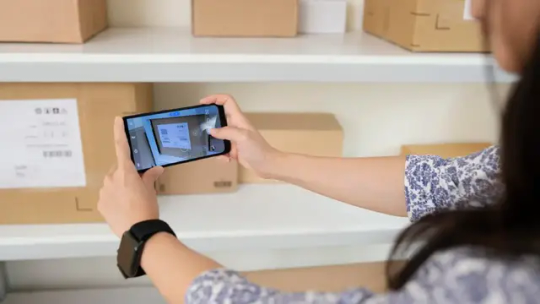
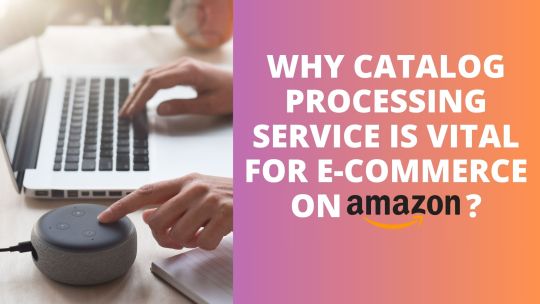
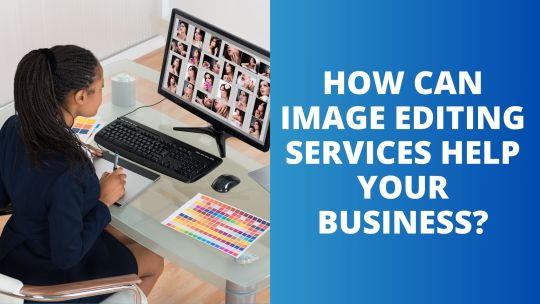
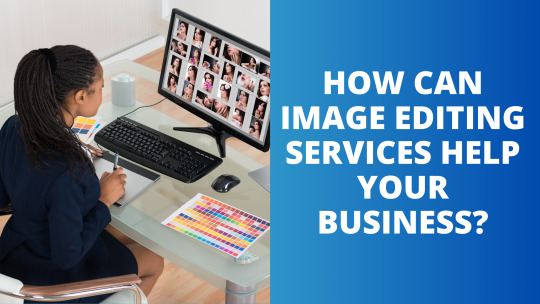

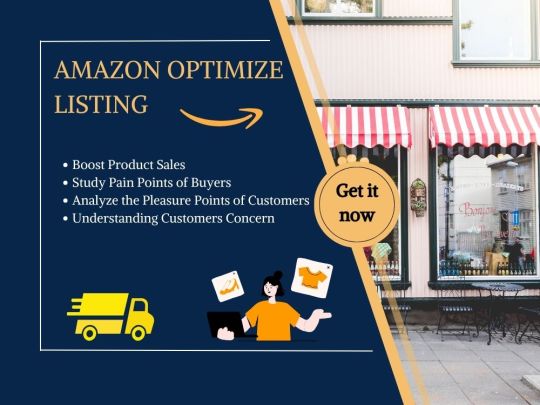
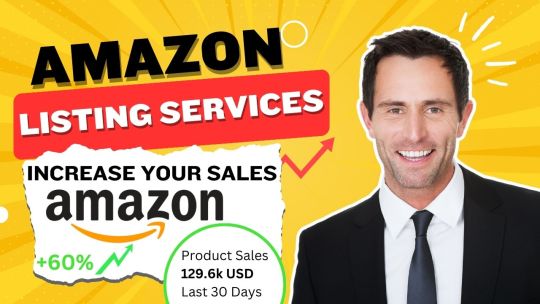


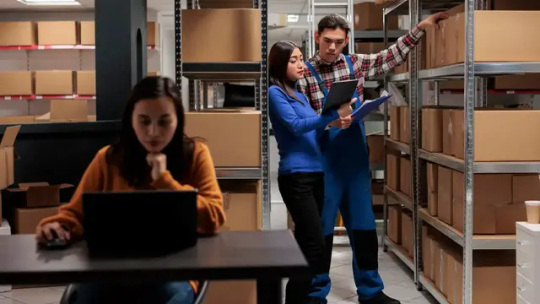



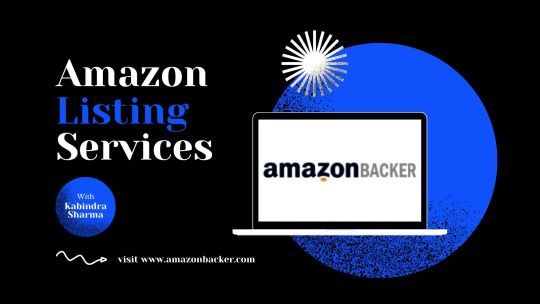
Amazon platforms use stringent templates that require accurate product-specific data entry. Errors in those entries may result in listings being pulled down by way of Amazon, lowering visibility and income.
ITS gives comprehensive Amazon listing services along with data access, upkeep and categorization. To receive a quote through their online contact shape. Quality comes first!
Catalogue Management Product Catalog Management is a crucial component of e-commerce business. It ensures customers find exactly what they are attempting to find and complements purchasers enjoy, even as simultaneously decreasing stock prices and increasing sales. Unfortunately, managing a large catalogue may be time-consuming and challenging; to be effective you need to appoint an experienced Amazon listing services organization to address this task; their experts will deal with any demanding situations as they help generate more sales for you.
Organization and control of your catalogue are key to last competitive on Amazon Marketplace. With more than 1.9 million active dealers on this platform, e-trade brands ought to put all odds in their favour by way of being visible to target audiences - with the right catalogue management, they can convert passive browsers to real customers!
One of the central additives of any success catalogue is presenting precise and accurate product descriptions. A right description must encompass USPs, features make use of and benefits that help customers decide whether or not a product fits into their lives; key phrases in a herbal and persuasive tone need to additionally be utilized to sell users on purchasing it. A superb description will spotlight the way it benefits customers over competitors in addition to what sets it apart.
Proper categorization of listings is important to growing visibility and growing sustainable lengthy-time period increase. Miscategorization can bring about poor person reports that lead to decreased search ratings; additionally, wrong product shows may want to purpose customers to abandon their carts altogether.
Professional catalogue control offerings will allow you to nicely categorize your listings, making sure that each product fits into the most suitable category and getting rid of reproduction listings for the highest quality shopping reports for clients. They'll additionally assist in enhancing content material using updating descriptions, adding relevant keywords, casting off competitor commercials, selling applicable touchdown pages and growing keyword-rich ad reproduction while providing an omnichannel customer journey experience.
Read full article here: https://www.busyblogies.com/sales-with-amazon-listing-services
3 notes
·
View notes
Text
Unlocking Opportunities: How to Win Cash Online
In today’s digital age, the internet offers a plethora of opportunities to win cash online. Whether you're looking to supplement your income, fund a hobby, or just enjoy a bit of extra spending money, the online world provides numerous avenues to earn cash prizes. From participating in online contests to engaging in skill-based games, the possibilities are vast and varied. Here’s a comprehensive guide on how to win cash online, along with tips to maximize your earnings.

1. Online Contests and Competitions
Many websites and social media platforms host contests and competitions that offer cash prizes. These can range from photography contests to writing competitions, gaming tournaments, and more. Websites like Contest Girl and The Balance Everyday list various contests that you can enter to win cash and other prizes.
Tip: Enter contests that match your skills and interests to increase your chances of winning.
2. Cashback and Reward Programs
Cashback and reward programs offer another way to win cash online. Websites and apps like Rakuten, Honey, and Ibotta provide cashback for online purchases, essentially paying you to shop. Additionally, some credit cards offer cashback rewards for every dollar spent, which can be a great way to earn extra cash if you manage your spending wisely.
Tip: Combine multiple cashback programs to maximize your earnings on every purchase.
3. Skill-Based Gaming
If you have a knack for gaming, there are several platforms where you can win cash prizes by playing skill-based games. Websites like Skillz, WorldWinner, and Lucktastic offer tournaments and competitions in various games, allowing you to win cash based on your performance.
Tip: Practice regularly and start with smaller competitions to hone your skills before entering higher-stakes tournaments.
4. Investing and Trading
For those with some knowledge of the financial markets, investing in stocks, cryptocurrencies, or forex can be a lucrative way to win cash online. Platforms like Robinhood, E*TRADE, and Coinbase make it easy to start investing with minimal initial capital. However, it’s important to educate yourself and understand the risks involved.
Tip: Start with a small amount of money and use tools like virtual trading simulators to practice before investing real money.
5. Affiliate Marketing
Affiliate marketing involves promoting products or services and earning a commission for every sale made through your referral link. Websites like Amazon Associates, ClickBank, and ShareASale offer affiliate programs where you can win cash online by driving traffic to their products.
Tip: Focus on promoting products that align with your niche or interests to build trust with your audience and increase conversion rates.
6. Online Auctions and Selling
Selling items you no longer need or creating handmade goods to sell online can also help you win cash. Platforms like eBay, Etsy, and Facebook Marketplace make it easy to reach a large audience of potential buyers.
Tip: Take high-quality photos and write detailed descriptions to attract more buyers and command higher prices.
Conclusion
Winning cash online is not only possible but can be a fun and rewarding experience. Whether you prefer taking surveys, entering contests, freelancing, or investing, there are numerous opportunities to suit different skills and interests. By diversifying your efforts and staying persistent, you can increase your chances of earning extra cash and achieving your financial goals. Happy earning!
2 notes
·
View notes
Text
Buy Walmart Seller Account For Any Country
Buy Walmart Seller Account
Buy Walmart Seller Account – 100% Safe & Best Marketplace
Buy a Walmart Seller Account to start your E-Commerce business. Connect to CRM, Summary, People, Signals & News. About. Buy Walmart Seller Account.
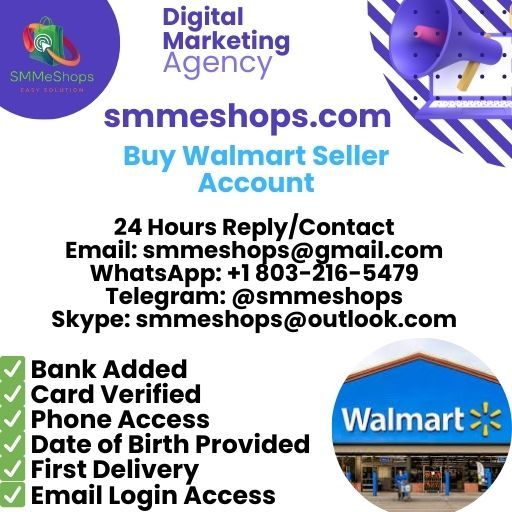
Our service gives:-
✅ 24/7 Customer Support
✅ 100% Satisfaction & Recovery Guaranteed
✅ Email Login Access
✅ Bank Added
✅ Card Verified
✅SNN code and Router number.
✅ Phone Access
✅ Driving License Scan Copy
✅ Date of Birth Provided
✅ First Delivery
✅ Realistic Photo Attached Accounts
✅ Complete Account Access
✅ Account from unique IPs
✅Personal and Business accounts.
✅100% phone verified USA, UK, and other countries.
✅100% Full document verified.
To Talk More About Getting & Buy Any Service Contract With Us:
24 Hours Reply/Contact
Email: [email protected]
WhatsApp: +1 803-216-5479
Telegram: @smmeshops
Skype: [email protected]
The History Of Walmart Marketplace
Considering the eventuality of online businesses, Walmart launchedwalmart.com in the year 2000. The website was designed to offer a
flawless and harmonious client experience – be it store or online.
In 2007, it launched its Store Service, where it innovated the concept of multichannel shopping by allowing guests to pick their online orders in stores.
During 2009, Walmart stepped into the online world and created the so- called Walmart Marketplace. The idea was to invite different third- party merchandisers
and help them find their products atWalmart.com.
Ultimately, this conception opened a whole new avenue and brought in colorful retailers countrywide, growing their openings to a more significant position.
At the moment, it boasts more than 300- 400 retailers, including some big titans like eBags, ProTeam, and Wayfair. The products of third- party merchandisers are vended
together with the name “ Walmart Marketplace ” on the Walmart force( online). This is substantially to distinguish them from the usual particulars.
The particulars that are vended from a third party aren't traded or vended in stores.
In August 2016, WalmartInc. acquired thee-commerce businessJet.comInc. for 3 billion USD. This makes it a big deal for merchandisers because their
products can be stressed onWalmart.com elevations. Also, its massive consumer followership is another advantage.

Should Walmart Be A Part Of Your Multi-Channel Strategy?
Since Walmart is decreasingly inclining its growth every time, it's great news for all business merchandisers out there. After all, the idea is to invite implicit
shoppers and offer competitive advantages to merchandisers.
Doug McMillon, Walmart CEO, has stated that their 2- day free shipping concept has formerly given “ an amazing supplement ” in terms of deals. So, this makes
It is a great time to talk about multichannel selling. Still, this might not be as easy as it sounds.
The further channels and SKUs you manage, the more advanced are the possibilities to lose track of your force and orders. still, you could go with intelligent robotization
tools to help you with that.
What is Walmart Marketplace?
Walmart Marketplace is an online platform, like Amazon and eBay, where small businesses can list their products for trade online, alongside Walmart’s own products.
Walmart has long distinguished itself for its low prices, so this business is a good fit for merchandisers that offer great products at affordable rates.
You can use Walmart’s Sponsored Hunt advertisements to promote your products to Walmart’s callers and use their fulfillment services, if asked ,
to handle the logistics of managing force and shipping out orders.
How much is your Walmart Marketplace seller account worth?
We reached out to the investor that purchases these accounts and asked them about the process. The accounts are valued grounded on age,
deals history and number of dealer reviews. Newer accounts that have little to no deals history or dealer reviews are generally worth a many hundred bones and
aged accounts with good deals history and a considerable quantum of dealer reviews can be worth many thousand bones .
Is it safe to sell my Walmart Marketplace seller account?
According to the investor, it's 100% safe and secure to sell your account. After they confirm that your dealer account is licit and in good standing,
payment is transferred to the dealer. also they give you with new company and fiscal information for you to remove yours and replace with the new word so that
none of your sensitive information remains. Once you have completed the process, you give access to the account, icing that your sensitive information is norway
seen or remains after the transfer.
How do you get an offer to find out how much your account is worth?
We ’ve included a link below to an online form where you'll enter some information about your account. It generally takes about 5 twinkles to complete and
after you submit your word, you're transferred an offer for your account within 1 business day.However, the payment and transfer process generally takes about
1- 3 business days to complete, If you choose to accept the offer.
How to Set up a Seller Account on Walmart Marketplace
Walmart is one of the largest retailers in the world. Walmart is gaining its position as a US eCommerce point via retail, websites, and mobile apps.
As Walmart continues to make out its business capabilities, the number of approved merchandisers has been climbing at an adding pace. This business has been
historically conservative about who they allow dealing on their platform. Their delicate operation process and strict conditions have been a roadblock for
numerous-commerce merchandisers. In this moment's blog, we will show you how to set up a dealer account on Walmart.
New seller incentives

Because Walmart Marketplace is presently in a growth phase, it’s a boon for merchandisers at the moment. Walmart has offered a range of promos for brands
willing to subscribe up. While these can shift over time, one of the most recent promos Walmart offered was a 25 reduction in commission rates for the first
90 days of selling.
Economies of scale
For merchandisers who are formerly using business tools like warehousing and fulfillment coffers, integrating into the Walmart ecosystem can be fast and easy.
While costs might rise due to increased use, you ’re effectively spreading your investment across further than one occasion. This drives raised profit without a
commensurable increase in spending.
Omni-channel opportunities
By adding Walmart Marketplace to the blend of being platforms you use, you ’ll have the occasion to take an omni- channel approach by spreading your products and
services across Walmart’s online and physical stores. With different requests and deals strategies, the Walmart Marketplace gives you another followership to engage with.
Expert tips for selling on Walmart Marketplace
numerous brands have their reasons for using this platform and can establish themselves on Walmart’s business, but not all guests will be made equal.
Some merchandisers will perform better than others, so, if you want to be the stylish of the stylish and come a name shoppers come to know and trust, keep these expert
tips in mind.
Win the Buy Box
Buy Box products are the first and largest result on hunt runners; all other products are listed below. The Walmart algorithm uses a many crucial criteria
to weigh who'll win the most affordable pricing, including shipping costs, force situations, and accurate information about product quality.
Still, your products are in stock, and your rosters are accurate, If your pricing is competitive.
Have competitive pricing
As compelling as it might be to keep your prices high for maximum profit, this is n’t a stylish marketing strategy. rather, you need to keep pricing in line
with client prospects. This frequently means changing the right balance between remaining competitive while still doing as much as possible to turn a profit.
Managing this successfully may bear price testing, in which pricing is acclimated and estimated against deals. This, alongside force vacuity and contender geste ,
can help you come to a price that will win the Buy Box.

Understand your audience
Some brands assume the buyers on Walmart will be the same as those on platforms like Amazon and Target, but this is n’t inescapably the case.
The demographics can be different, particularly concerning youngish shoppers who might protect in person at Walmart, buy online at Amazon.
By understanding who's shopping on Walmart’s website for products like yours, you can tweak product descriptions, optimize keyword use,
and place flings strategically to capture the most effective guests for your brand.
Use automation
Doing everything yourself, from curating product information to client exploration to assaying the competition, is theoretically possible,
but can eat up a significant quantum of time with minimum substantiation that you ’re getting anywhere. Through the use of Walmart advertising software,
you can let robotization take over the hard corridor. Streamline workflows, access thorough yet stoner-friendly analytics,
and produce juggernauts that target all areas of the deals channel.
robotization can also help with placing flings on keywords for PPC announcement juggernauts. Platforms like ours influence your objects,
to run tests by changing flings, and establishing optimal settings. robotization on larger product registers can be a good way to get ahead without a
significant time investment.
Keyword harvesting
It’s hard to succeed in PPC advertising if you ’re not using the right keyword approach. Rather than trying to keep up with clicks, transformations,
and prints for everything you have listed for trade, automating this process can help you gather the stylish possible keywords for your products.
With the right AI- guided tools, you can manage your juggernauts while letting advertising software shoulder the burden of bidding and data analysis.
In summary
Dealing on Walmart Marketplace can feel dispiriting at first, after all, adding another eCommerce platform to the blend requires considerable time investment,
but getting started, particularly if you formerly have a presence on spots like Amazon, can be easier than you suppose.
And, if you ’re formerly using or are considering employing an eCommerce tool designed to automate and streamline pricing, keyword use, bidding, and followership analysis,
creating a robust and profitable storefront can be a great occasion to turn a profit. Contact Trellis moment to see what our moxie and AI results can do to
move your business forward.
How much does it cost to sell on Walmart Marketplace?
There are no outspoken costs involved with dealing via the Walmart business. Unlike platforms that charge class or subscription freights, getting started is free.
Rather, Walmart charges commissions on deals grounded on order, ranging from around 6 to 20. There also may be new stoner promos that can reduce the overall cost for
the first many months.
How long does it take to start selling on Walmart?
Assuming all account details are handled duly and there’s no need for fresh information, it can take between two to four weeks for Walmart’s
internal platoon to review and authorize your account. To minimize detainments, respond to any queries the Walmart platoon has as snappily as possible to insure
a prompt launch to selling.
Can individuals sell on Walmart Marketplace?
Yes, individualities can be sold on Walmart Marketplace. Still, a social security number is not permitted as a way to produce and corroborate an account. therefore,

If an individual dealer wants to begin listing products, they ’ll need to produce some kind of business that uses a drum. An LLC is a simple way for single merchandisers
to produce a company- such as structure.
Note that Walmart generally should not be the first platform druggies vend on, due to their sign up conditions of having attestation of former success in the eCommercespace.
However, Walmart is doubtful to accept your operation, If you do n’t have experience in other commerce. still, this is good news for merchandisers who get approved
as it creates a more secure space for buyers, weeds out echo brands cutting into your request share, and weeds out some of the noise druggies face on commerce. SMMeSHOPS.COM
#Buy Walmart Seller Account For Any Country#Buy Walmart Seller Account 2024#Buy Walmart Seller Account USA#Buy Walmart Seller Account UK#Buy Walmart Seller Account World#BuyWalmartSellerAccount#Buy Walmart Seller Account
2 notes
·
View notes
Text

Needed to share this with the fans because Jeff too was a fan of music. Things go into the past and I'm here to carry them on, even if it is through the aether.
If you want to see Jeff Buckley's handwriting, his scrawl's there ("Love is rebellion - Rough Trade I miss you already," he writes "too early in the day, March '94").
Alex Marshall
Tue 3 Jul 2007 07.42 EDT
With Fopp gone, Rough Trade is the last bastion of the record shop
Rough Trade is replacing its Covent Garden shop with a megastore in east London. But is this a good thing, or merely a last hurrah?
Sonic Youth are among the seminal acts that have played at Rough Trade in Covent Garden since it opened in 1987
There was only one topic discussed by students last week: the closure of Fopp - the UK's largest independent record store chain.
When it was announced, you could hear the crying on every campus - and rightly so, as where else could you buy the new Queens of the Stone Age record and still have change? But newspapers also did their fair share. It marked the end of the record shop, they said - everyone will have to buy their music either online or at the supermarket.
But if you thought Fopp's demise was a bad sign, later this month Rough Trade in Neal's Yard, Covent Garden, will also shut up shop. And it'll be taking two decades worth of history with it.
The teeny space - it fits about a dozen people, uncomfortably - down a stairwell at the back of a skateboard shop, is the lesser heralded of the two Rough Trades. Largely because no one can find it. But since opening in 1987, it's seen everyone from Sonic Youth to Lily Allen play gigs there while shoved in a corner. They've all signed the ceiling too, turning the shop into a veritable museum of indie.
If you want to see Jeff Buckley's handwriting, his scrawl's there ("Love is rebellion - Rough Trade I miss you already," he writes "too early in the day, March '94"). So is that of Fall frontman Mark E Smith (signed "Mark E Sonic", for God knows what reason). And then there are Guardian favourites like LCD Soundsystem and the Gossip ("Kleenex 4 ever", Beth Ditto's written, referring to the pioneering female punk band).
There are also loads of pictures of cocks, proving that if you give any male a marker pen - be it a thirteen-year-old or a thirtysomething rock star - there's one thing they're going to draw.
Most of the bands who have played there, though, are of a much smaller stature, reflecting the rather (ahem!) distinct tastes of the shop's staff. Appropriately enough the final gig last Thursday was played by The Young Republic, an eight-piece country-pop band from Boston, Massachusetts, featuring pedal steel guitar, upright bass and violin. Although there were only six of them on that occasion for space reasons.
Rough Trade is replacing the shop with a 5,000-square foot megastore off Brick Lane in east London. The site is little more than an empty warehouse at the moment, but by the time it opens on 20 July, it'll feature a proper stage with a proper sound system and a "snug area with free wireless connection" (please don't mean a coffee shop).
Rough Trade is portraying the move as a brave one, showing the potential independent record shops still have. But in light of Fopp's demise it seems more like a last hurrah - the company chasing the "cool kids" to east London rather than believing the records it sells are enough to entice the cool kids to them. With such a large area to fill, there's also the likelihood it'll have to adopt a soulless "pile it high, sell it cheap" approach to record selling - something which goes against the ethos of the shop and which clearly didn't work for Fopp.
Here's hoping I'm wrong and the new store thrives, bringing bands like Mika Miko (current Neal's Yard favourites) to wider attention. But what do you think? Can independent record stores still flourish, or should they finally give in to the Amazons and Tescos? Does Rough Trade's history make it immune to market trends - or is it just as vulnerable as Fopp was?

“When he played the Rough Trade shop in Covent Garden, I made sure I got in. I stood on the stairs six foot away from him at eye level. He did Boy With the Thorn in His Side and he smiled all the way through. Afterwards we talked about The Smiths and The Pretenders. I’ve met so many tossers in music, but he was a lovely guy, the most talented person I’ve ever met, but also the nicest.”-Bernard Butler, Suede, Mojo, August, 1997 (I believe both the pic and Bernard seeing him there happened on this day)
11 notes
·
View notes